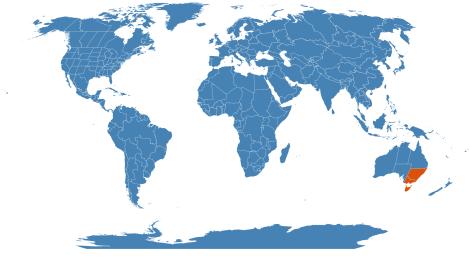Accession Data
Eucalyptus globulus
Common Name: Tasmanian Blue Gum
Family: Myrtaceae
Country of Origin: New South Wales to Tasmania
Description: Blue Gum Eucalyptus is an evergreen tree that reaches a height of 15 meters or more. Bark is grayish, peeling off in thin, long strips, whitish gray underneath. Young leaves are cordate, glaucous-blue, and clasping the stem. Mature leaves are leathery, lanceolate, dark green, usually somewhat sickle-shaped, more than 30 centimeters long. Flowers are white, about 1.5 centimeters in diameter. Fruit is obovoid or somewhat rounded, about 8 millimeters in diameter.1
Uses: Oils are in classified into:
- medicinal, containing eucalytol or cineol
- industrial, containing terpenes, used in mining operations
- aromatic, as in E. citriodora
Considered anesthetic, antibronchitic, antiseptic, anticatarrh, antiparasitic, antirheumatic, antispasmodic, antiviral, cooling, anti-inflammatory, diuretic, febrifuge, rubefacient, analgesic, insect repellent, sedative, expectorant, stimulant.1
Accession Data
USDA Zone: 8-10
Accession #: 200400173
Accession Date: 2004-09-20 00:00:00
Bloom Status: 🪴 Not Flowering
Location: 2317
Quantity: 1
Source: Jeff Smith - Connecticut College
Classification
Division: Magnoliophyta
Class: Magnoliopsida
Subclass: rosids
Order: Myrtales
Family: Myrtaceae
SubFamily: Myrtoideae
Tribe: Eucalypteae
References
- Eucalyptus at Philippine Alternative Medicine. Last accessed Tuesday, 18 December, 2018.
- The Plant List (2013). Version 1.1. Last accessed on Tuesday, 18 December, 2018.
- WCSP (2015). World Checklist of Selected Plant Families. Facilitated by the Royal Botanic Gardens, Kew. Last accessed on Tuesday, 18 December, 2018.
Images

